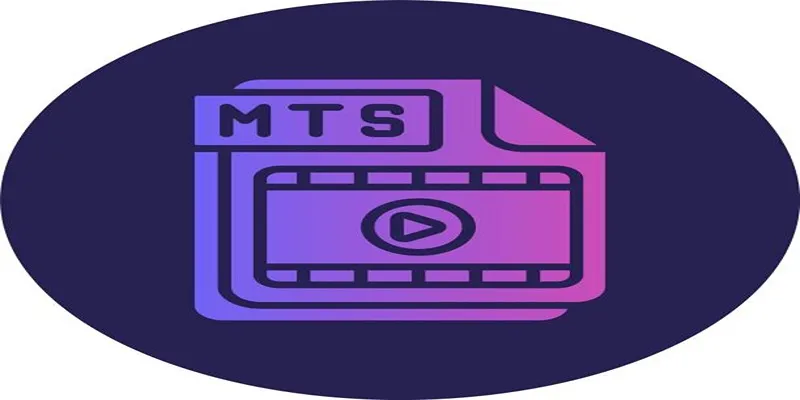Prioritize User Feedback in Your Product Roadmap with Beamer
Products in today’s digital economy must satisfy consumer needs, solve practical problems, and grow via relevant feedback. Forward-thinking product teams understand that working in isolation can lead to mismatches with market demand and eventual product failure. Instead of making assumptions, businesses are adopting a user-centric approach, integrating feedback throughout product development. This transformation is empowered by Beamer’s robust toolkit for compiling, prioritizing, and acting on user feedback at every stage of product development.
When feedback drives decision-making, roadmaps become dynamic narratives reflecting both user intent and company strategy. Beamer helps product teams understand consumer desires, making it easier to decide which features to introduce, which problems are most pressing, and what innovations could revolutionize the industry. By shifting from assumption-based development to feedback-driven execution, Beamer enables companies to grow confidently and accurately.

Appreciating User Input’s Authority
User feedback is more than just comments; it reflects needs, experiences, concerns, and aspirations. Each piece of feedback can enhance usability, add new features, or highlight existing issues. Traditionally, companies have relied on customer support, surveys, and analytics to gather feedback, but these methods can be slow, inaccurate, and fragmented. Beamer focuses on transforming this noise into actionable insights.
Beamer emphasizes the active impact of passive input. Instead of burying user suggestions in support emails or CRM databases, Beamer facilitates systematic submission, voting, monitoring, and discussion. Users become a crowdsourced product team, influencing product development. Creating a collaborative environment where users feel acknowledged and valued promotes long-term loyalty and advocacy.
Centralizing Comments on One Platform
Managing user input is challenging when fragmented. Marketing collects data from social media; support receives complaints via email or chat; product managers maintain spreadsheets; engineers rarely hear the consumer’s voice. This siloed thinking often leads to lost ideas, duplicated work, and slow responses. Beamer addresses this by consolidating all input sources into a dashboard accessible to product leaders.
Beamer’s platform captures input through announcement feeds, in-app widgets, and feedback boards. Inputs are categorized, tagged for relevance, and ranked in a shared space. This centralized approach enhances visibility of user sentiment and fosters business collaboration. Agile teams, regardless of size, benefit from a continuous, up-to-date feedback environment.
Voting Systems for Confident Prioritizing
Not every piece of feedback carries equal weight, making it challenging to prioritize improvements. Some ideas are technically complex but popular, while others appeal to a niche audience. Beamer’s community-driven prioritization mechanism allows users to upvote each other’s ideas. This fosters a democratic, transparent feedback system and provides real-time insights into user priorities for product teams.
The upvote system replaces guesswork with verified demand by connecting customers and product teams. It quickly identifies common pain points and high-value feature requests, enabling product owners to justify resource allocation. Team members can make data-driven decisions by aligning vote totals with strategic fit and development cost. This methodical discussion, rather than one-sided decision-making, enhances alignment and reduces development cycle waste.
Creating Open Roadmaps for Collaboration
Traditional product roadmaps are often kept confidential within internal teams or stakeholders, which can reduce user trust and enthusiasm but also shields against external pressure. Beamer allows companies to publish public or invite-only roadmaps, showing customers what’s planned, in development, and delivered. Transparency manages expectations, fosters user involvement, and builds trust.
Beamer’s approach emphasizes visibility and inclusion—users whose suggestions are followed or who see popular requests fulfilled become more invested in the product’s success. A roadmap aids internal alignment and communication. Product and marketing teams can work towards well-defined objectives, ready for feature releases. This partnership transforms the roadmap into a dynamic connection, linking customers with developers.
Closing the Feedback Loop via Announcements
While gathering feedback and taking action are crucial, closing the loop is essential for engaging users. Too often, customers request changes or report issues without learning what happens next. This disconnect can erode engagement and trust. Beamer addresses this with an announcement module that notifies users when a suggestion is approved, developed, and released.
Beamer’s in-product announcements can reduce friction and increase awareness by delivering real-time updates directly within your app. Users who supported a top-voted feature are notified when it goes live. This promotes collaboration and aligns product improvements with user orientation and importance. Sharing these achievements helps users feel valued, boosting satisfaction, advocacy, and retention. Strong audience relationships require a closed feedback loop.
Seamless Compatibility with Your Stack
No tool can function in isolation in today’s digital landscape, so Beamer integrates with business systems. For internal updates, client interactions, and issue tracking, Beamer can incorporate user insights into Slack, Intercom, and Jira. This level of integration embeds feedback into daily decisions and actions.
Integration supports ongoing activities. Developers can receive task-ready requests without manually reviewing feedback. Feedback tags allow customer success teams to monitor issue frequency. Marketing can align product launch information with consumer enthusiasm. Beamer is compatible with virtually any stack through Zapier and API access, making it ideal for agile companies seeking scalable, flexible feedback solutions.
Drive Development Using Feedback-Driven Innovation
Discussion fuels creativity. Successful product enhancements—such as dark mode, offline access, and customized dashboards—often originate from user requests. Beamer formalizes user suggestions into innovation, helping companies harness this creativity. Organizations can now co-create with users' lives in mind rather than relying solely on internal brainstorming.
Innovation driven by feedback reduces the guesswork and risk in product development. Ideas are evaluated to ensure audience fit before design or development. By projecting user behavior, Beamer’s analytics tools reveal which suggestions endure and which fade. This approach leads to faster iterations, an enhanced feature set, and a better product-market fit. Users become collaborators and innovators, contributing to the product’s success.

Conclusion:
The current product landscape is too dynamic, competitive, and user-driven to ignore customer feedback. Strategic resource feedback can guide decisions, drive growth, and differentiate products in a crowded market. Beamer helps you organize and utilize feedback in meaningful, measurable ways.
By integrating feedback into your product roadmap, Beamer empowers teams to collaborate, make informed decisions, and achieve significant breakthroughs. It transforms passive customers into loyal advocates and user insights into development goals. Beamer redefines not just product management but also user- centered technology in a digital-first era.
On this page
Appreciating User Input’s Authority Centralizing Comments on One Platform Voting Systems for Confident Prioritizing Creating Open Roadmaps for Collaboration Closing the Feedback Loop via Announcements Seamless Compatibility with Your Stack Drive Development Using Feedback-Driven Innovation Conclusion:Related Articles

The 8 Best To-Do List Apps for Android in 2025

How to Create Web Apps Using Claude Artifacts: A Full Beginner-Friendly Guide

12 Best Productivity Apps for Mac in 2025

What Are Creative Ways You Can Use Trello to Organize Work, Life, and Everything In Between?

Top 10 Apps to Add Text to Videos on Mobile and Desktop

The 6 Best Construction Management Software Options to Streamline Your Projects

Top 7 UI/UX Design Tools Every Designer Should Know

Which Are The 5 Best Pomodoro Timer Apps to Boost Your Productivity in 2025

Outlook vs. Gmail: Which Email Platform Wins in 2025?

The 8 Best Live Chat Apps for Customer Support in 2025

Best Apps for iPhone: 6 To-Do List Picks in 2025

5 Easy Ways to Download from GitHub: A Step-by-Step Guide
Popular Articles

5 Easy and Effective Methods to Add Audio to Videos

Customize Your iMovie Videos with Stunning Filters

Best Data Recovery Software for Mac Devices

Calendly vs. Acuity: Which Scheduling App Should You Use in 2025

The Best Free or Open Source Project Management Tools for Remote Teams in 2025

The 5 Best PayPal Alternatives for Businesses in 2025 to Streamline Payments

Top 5 Ways to Automate Google Analytics for Better Efficiency

Discover the Best Tools to Organize Your Music on Windows Today

Discover the Best: 6 Top-Rated Tools for IT Professionals in the Market

How to Easily Convert MTS to MP4, WMV, or AVI on Any Device

The 6 Best Construction Management Software Options to Streamline Your Projects

 mww2
mww2